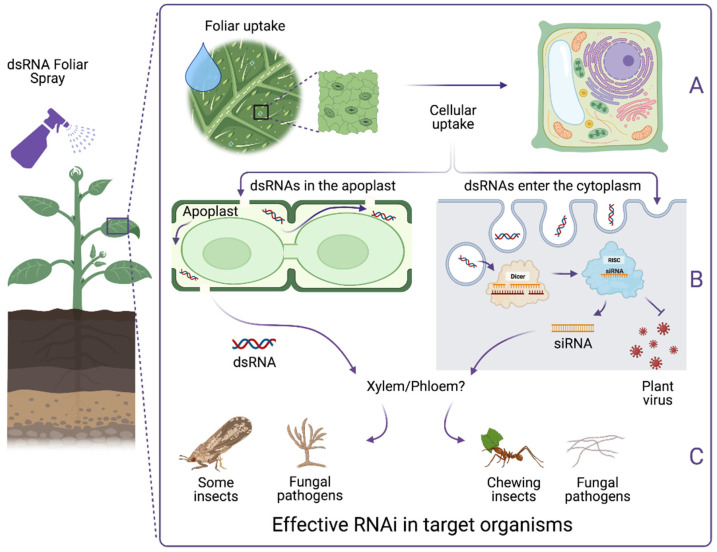Figure 1.
Functional crop protection via a foliar dsRNA spray to induce RNAi. (A). Plant uptake of dsRNA can be divided into two stages: foliar uptake where sprayed dsRNA molecules from the leaf surfaces enter the interior of the leaf tissue, and cellular uptake where dsRNA molecules get taken up into plant cells. Following foliar uptake, sprayed dsRNAs may diffuse through the leaf interior and cellular uptake may occur. (B). Once dsRNA penetrates the cell wall pores and cell membrane to enter the cytoplasm, the plant RNAi machinery can process dsRNAs into siRNAs. Produced siRNAs can lead to degradation of viral transcripts in local cells and also be transported to adjacent cells. siRNAs are likely to participate in long distance signaling through vascular bundles to other parts of the plant. It is uncertain how non-processed dsRNA in the apoplastic pathway are translocated systemically. (C). dsRNA/siRNAs from the plant surfaces or in the plant system can be taken up by different targets and trigger an RNAi response depending on their sensitivity to dsRNA or siRNA. Figure created with BioRender.com.

